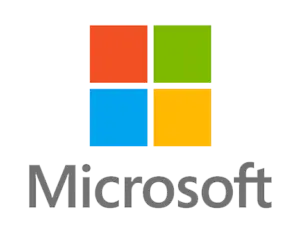Business Broadband options are rapidly changing in the UK. As new and better technologies are developed older ones are often being phased out. Knowing your options well is important in making an informed decision about which is best for your business.
Although all serve the purpose of connecting you to the internet, the technology used to achieve that differs. This makes some optimal and some less so for your specific business needs and circumstances. If you are struggling to choose or are not sure what to look for then this post is exactly for you.
In this post we will cover 5 main services and what they are and some of their pros and cons. We will also give you some examples of what circumstances each service may fit best in our opinion.
Why is business broadband Important?
The broadband you choose is extremely important. In this digital age almost everything happens via the internet. The quality of your connection will have a direct impact on your business performance.
In 2018 internet downtimes have cost UK businesses £742 million collectively. £683 million was the cost to all Small and Medium businesses.
The above show costs when the internet completely goes down meaning many businesses grind completely to a halt. What about disruptions caused by internet that is too slow to meet your business needs or is unreliable?
By choosing the right service you can greatly reduce future disruptions and downtimes. This will reduce your business costs and lost profits in the long term. By the end of this post you will have a better idea what differentiates each service and help you narrow down your search for that ideal broadband.
5 best options for business broadband
- FTTC (Fibre-to-the-Cabinet)
FTTC is currently still the most widely used connection across the UK. Although still a viable option in many areas, this service is being gradually phased out and will be withdrawn at the end of 2025. Some exchanges have already stopped providing this. It uses Fibre-Optic technology to the Cabinet and then copper wiring from the cabinet to your premises.
Speeds Up to: 80Mbps Download | 20Mbps Upload
Pros:
– Widely Available (Around 95% of the UK)
– Low Set Up costs
– Faster than standard ADSL Broadband
Cons:
– Highly Contended (Will rarely see speeds close to maximum in most areas)
– Discontinued after 2025
– Requires a phoneline
Example Use Case: Although FTTC makes it on the list, it is increasingly being replaced by more robust services. With speeds that are enough for average internet use and smaller offices it is still a viable option in areas with no better alternatives.
- SoGEA (Single Order Generic Ethernet Access)
SoGEA is an increasingly popular alternative for those who can’t get FTTP (Fibre-to-the-Premises). Unlike FTTC, SoGEA does not require a phoneline to work. This means it will be unaffected by the PSTN Withdrawal in 2025.
Speeds Up to: 80Mbps Download | 20Mbps Upload
Pros:
– Does not require a phoneline to work
– Uses same infrastructure as FTTC making it widely available
– Low Set-Up costs
– Faster Fix Time (Shorter Downtimes)
Cons:
– Uses copper wiring to premises
– No phone number access, cannot use analogue phones.
Example Use Case: Perfect for businesses that plan to or already switched to VoIP. This can be a great choice for businesses with average internet demands that want to switch from FTTC before the PSTN Withdrawal Deadline.
- FTTP (Fibre-to-the-Premises)
Unlike FTTC, FTTP uses fibre technology all the way to your premises. This enables speeds of up to 1000Mbps and in some cases even more.
Despite being the highest performing and most reliable service, it is only available in around 31% of the UK. This means you might have trouble getting it if your area does not have the infrastructure yet to provide it.
Speeds Up to: 1000Mbps Download | 1000Mbps Upload
Pros:
– Full-Fibre connection allows significantly higher speeds and reliability
– Higher Bandwidth
– Future-proof. FTTP will eventually be the standard.
Cons:
– Currently limited availability
– Higher average cost than FTTC
– Contended Line (you are unlikely to see full advertised speeds)
Example Use Case: FTTP is an all-round reliable product with the possibility of very high speeds. This makes it especially suitable for businesses with intensive internet usage. With various speed packages available to suit any budget, this is the recommended choice for any business that can get it.
- Leased Lines
This is a dedicated line directly from the exchange to your premises. Leased Lines can offer speeds up to 1000Mbps and even higher in some cases. Unlike the other options, a leased line is uncontended. This means your bandwidth is not shared with anyone in your area.
Running costs of a leased line are significantly higher. This makes it a very expensive solution.
Speeds Up to: 1000Mbps + Download | 1000Mbps + Upload
Pros:
– Ultra-fast speeds
– Uncontended bandwidth
– Fibre all the way to your building
Cons:
– Very Expensive
– Long Installation times
Example Use Cases: Due to the price, this service is for those who rely heavily on stable and ultra-fast internet daily. This might be the only option for those who do not have access to FTTP or simply want to have an uncontended line as they need the maximum bandwidth they can get regularly.
- 4G/5G
These connections run over a mobile network. With Unlimited Broadband SIM packages available for similar prices to regular broadband they can be very useful. 4G can offer you average speeds of 36Mbps and 5G average speeds of 100-200Mbps. Mobile networks however are more susceptible to fluctuations and therefore might not always be as reliable.
Speeds Up to: 4G 36Mbps | 5G 100-200Mbps
Pros:
– Quick Set-Up
– Can be more widely available in rural areas than other options
– Great as a backup connection
Cons:
– More prone to fluctuations
– Less reliable and usually slower than regular broadband
– Susceptible to interference
Example Use Case: This can be a great alternative for premises in rural areas that are behind in the roll out of traditional fixed networks. These connections can also be used as a backup that automatically kicks in if your regular network goes down (this is highly recommended for those that have critical processes relying on the internet).
Your business broadband is important. All of the above options have one thing in common. Their main purpose is to connect you to the internet. There are however slight variations to how they do it. This makes some more and some less suitable depending on your current circumstances.
Equipped with the above information you should have a better understanding of what you need and what is available when searching for your ideal business broadband.






